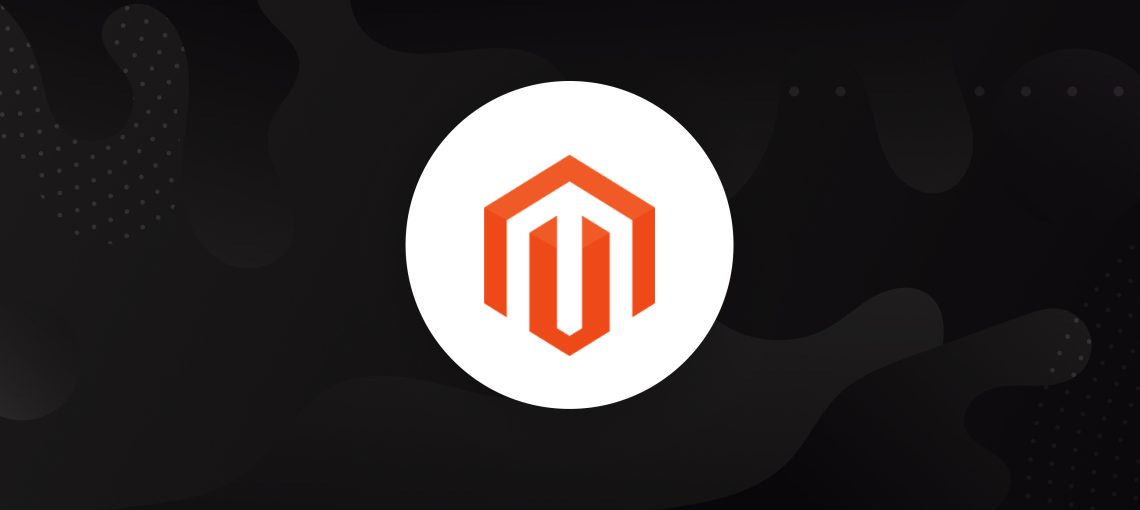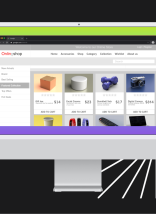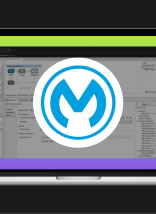Middleware is software that extends the capability of an existing application by facilitating data transfer with other applications or services.
For eCommerce, middleware is commonly used to integrate the online commerce platform with back-end ERP systems. Middleware also connects to third-party services like tax compliance, calculations, and shipping data.
Why use middleware for Magento integrations?
Unlike other types of integrations, middleware can offer the ability to deliver information to multiple sources at the same time while also giving a centralized place to handle all logging of calls to different services.
Some of the big advantages for this particular instance include:
- The ability to swap integrated systems, such as an ERP system, while not affecting the front-end Magento platform. This allows for the middleware to handle any kind of transformation or data manipulation to happen on that layer and keep the existing integration with Magento intact.
- During the phase of the migration to the new ERP, using middleware allows the system to send data to both the new and existing ERP at the same time while transitioning to production.
- Middleware offers a centralized way to queue communications, centralize API communication, transform data, and ensure delivery of important information between multiple systems.
- Middleware also provides a way to handle the addition of new systems such as PIM, CRM, or fulfillment software.
Atlantic BT’s research narrowed down three leading providers.
Many eCommerce businesses come to us for help extending the capabilities of their Magento application. Here, we provide a summarized example of a typical system integration analysis for an online distributor. This distributor was looking for a solution to integrate their multiple back-end systems with a Magento eCommerce platform.
Research included reviewing reports, speaking to many vendors, and testing different tools. Keeping 4 criteria in mind (ease of use, scalability, security/stability, and total cost of ownership), we selected three preferred providers for a comparison.
- EiPaaS – Mulesoft Anypoint platform
- Open Source Enterprise Integration Platform – Red Hat Fuse
- IaaS Serverless – Amazon Eventbridge an Amazon Web Services (AWS) service
In evaluating these contenders, our primary areas of assessment were:
- Feature Analysis (focused on ease of use, scalability, security, and stability)
- License Evaluation, Cost Flexibility (scale up/scale down), and Vendor Lock-In Analysis
- Total Cost of Ownership Analysis
- Technical Commentary
Comparative Analysis
For any comparative evaluation, you first need to define your basis for comparison. It makes the most sense to compare based on what is more important to your need, such as which features and functionality you require. Of course, there are also considerations that come into play with ROI calculations, such as implementation and operating costs. Although some specifics may change project to project, below we address the major categories that we find apply to almost all integration projects.
We ranked each offering for each parameter based on a 10-point scale. These were then averaged together by major category, which were then weighted based on a relative importance scale we feel is typical for most integration projects. While scores and weightings can vary for any individual project; we feel this represents a typical eCommerce integration project.
Feature Comparison
Individual features are single points of user interaction or back-end functionality, of which there are typically quite many in enterprise-level applications; therefore a full feature-by-feature analysis typically takes many pages and can vary greatly based on implementation needs. However, for the purposes of this exercise, we can group those features together into major categories that have a significant impact on the choice of middleware for your integration.
| Mulesoft | Red Hat Fuse | Amazon Web Services | |
| Ease of Use | 10 | 5 | 6 |
| Scalability | 9 | 6 | 10 |
| Security / Stability | 10 | 6 | 9 |
| Average | 9.7 | 5.7 | 8.3 |
Total Cost of Ownership (TCO) Comparison
Understanding the total cost of ownership before embarking on any major system integration project is crucial and will vary depending upon both the solution chosen and the scope of the requirements.
The following breakdown shows relative costs between not only the solutions, but also distinguishes between setting up the basic platform, development required for integration, licensing, and hosting costs. Initial development is driven to a large extent by the scope of integrations, while ongoing operational costs are driven largely by the licensing model.
It is easy to focus on implementation cost, but it is also important to understand the licensing and operating costs associated with the solutions. These examples demonstrate the impact of both on TCO.
| Mulesoft | Red Hat Fuse | Amazon Web Services | |
| Initial Development (hours) | 100 | 125 | 125 |
| Platform Setup/ Configuration (hours) | 25 | 100 | 30 |
| Annual Licensing + Hosting ($) | $100k | $55k | $40k |
| First Year Cost | $123,125 | $101,250 | $86,250 |
| 5 Year Estimated TCO | $523,125 | $321,250 | $246,250 |
| Expressed as % over lowest | +112% | +30% | – |
| Expressed as Score | 0 | 7 | 10 |
License Comparison
License structures can range broadly from a very flexible open-source model to a highly restrictive, tiered model based on features and usage. Cost flexibility depends upon whether costs are fixed or variable, based on license tiers or usage volumes, or a combination of both. Vendor lock-in can be based on such factors as technology used, interoperability, or long term contract agreements.
| Mulesoft | RedHat Fuse | Amazon Web Services | |
| License Eval | 7 | 6 | 10 |
| Cost Flexibility | 3 | 8 | 10 |
| eVendor Lock-In | 5 | 9 | 10 |
| Average | 5 | 7.7 | 10 |
Technical Comparison
This section is based on somewhat informal analysis addressing the underlying problem we are solving, the way the solutions we included as contenders go about solving the problem and where we think the future will take us. Think of this as your philosophical approach to development and how that may be influenced by other factors.
For example, the current trend in software development is toward a microservices-based architecture. Rather than building monolithic software that is built and deployed together with interdependency woven in, building with a collection of microservices is based on the premise that small services with a narrow purpose provide the best scalability, resilience, and flexibility. This section was scored based on this microservice approach.
| Mulesoft | RedHat Fuse | AWS | |
| Microservices | 5 | 7 | 10 |
| Future Extensibility | 6 | 6 | 10 |
| Average | 5.5 | 6.5 | 10 |
Overall Comparison
Below is our summary aggregation of the scores above. Scoring was weighted with 40% of total score given to features and the remaining sections 20% each. Section scores were each averaged above, so they were all normalized before weighting was applied.
Of course, this method of scoring is an exercise to force relative comparison; your weights may vary based on your priorities. Either way, there is value in the relative comparisons, and the explanations we provide with such an analysis for your project would detail the specific reasoning behind our scoring and highlights key factors in our strategic recommendation specific to your needs.
| Mulesoft | RedHat Fuse | AWS | |
| Features (40%) | 9.7 | 5.7 | 8.3 |
| TCO (20%) | 0 | 7 | 10 |
| License/Flexibility (20%) | 5 | 7.7 | 10 |
| Technical Opinion (20%) | 5.5 | 6.5 | 10 |
| Weighted Average | 6.0 | 6.5 | 9.3 |
With a proven process for in-depth research, Atlantic BT is well-equipped to help you choose the right technology or design for your business. Reach out if you could use some help in your decision-making process.






